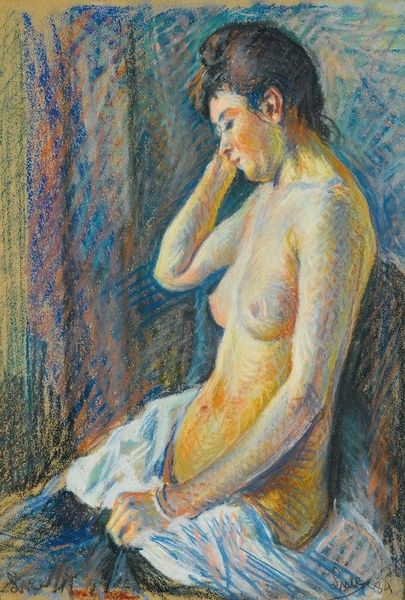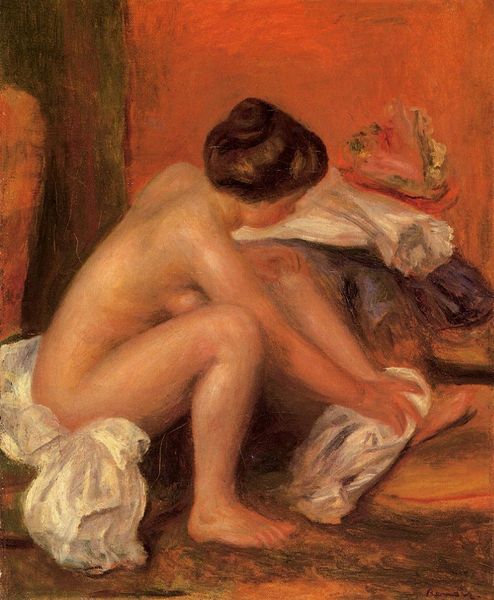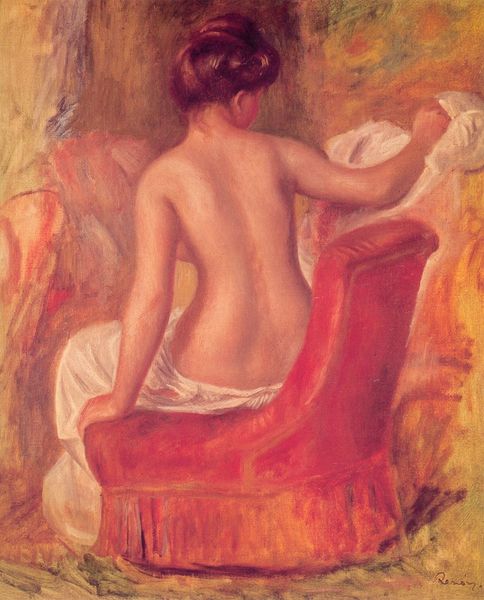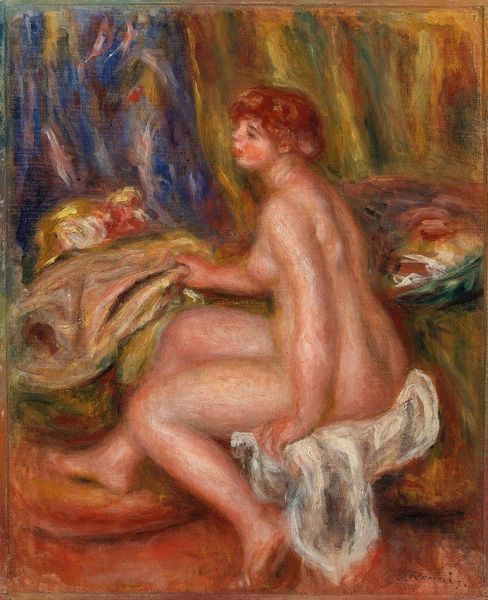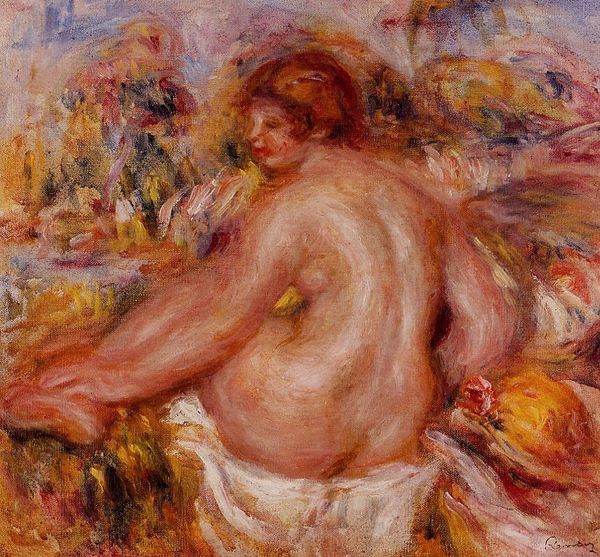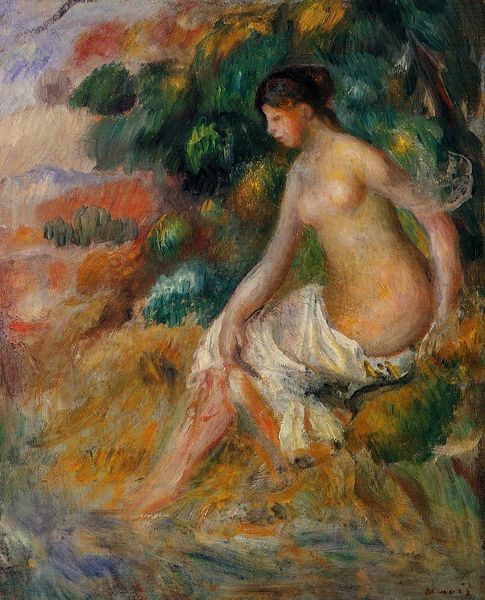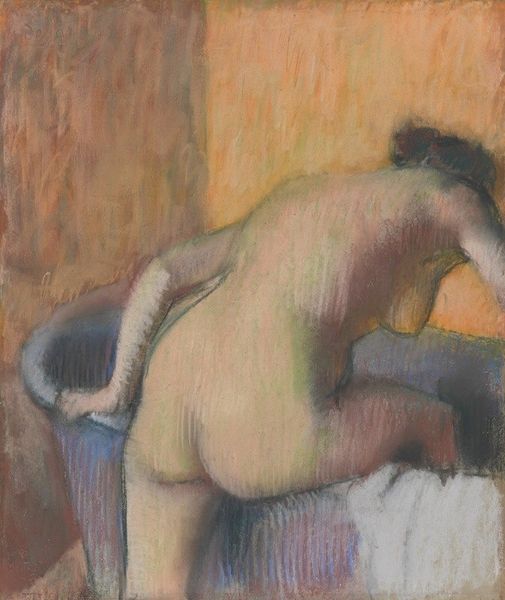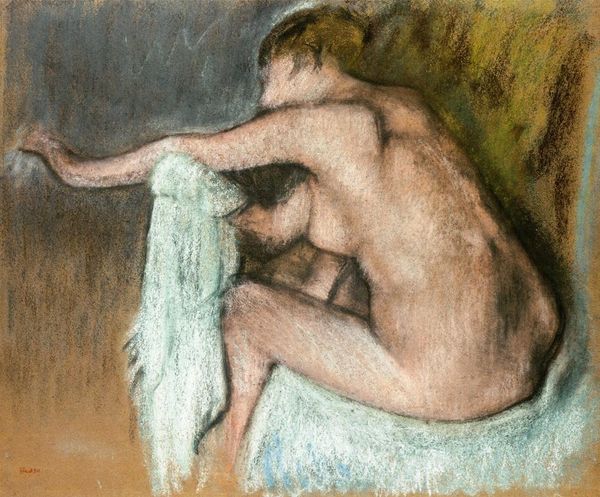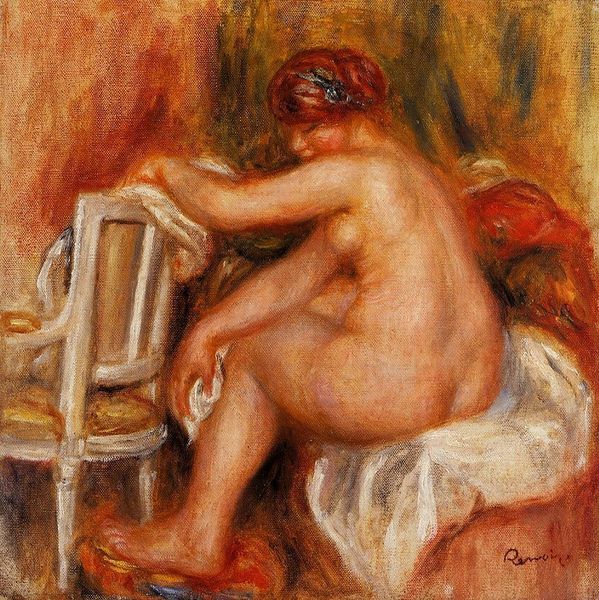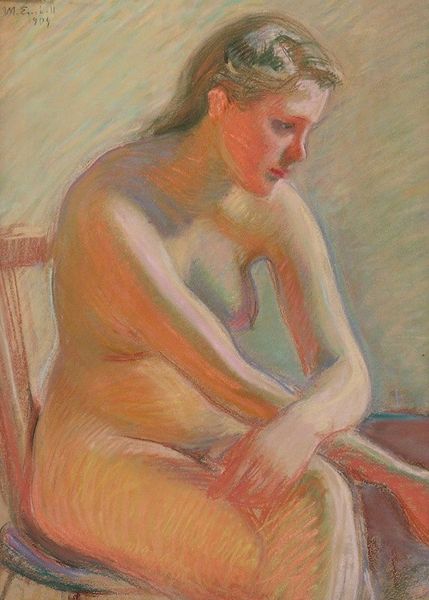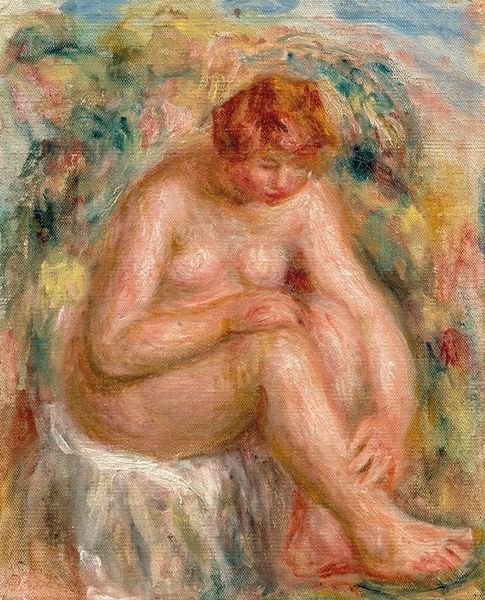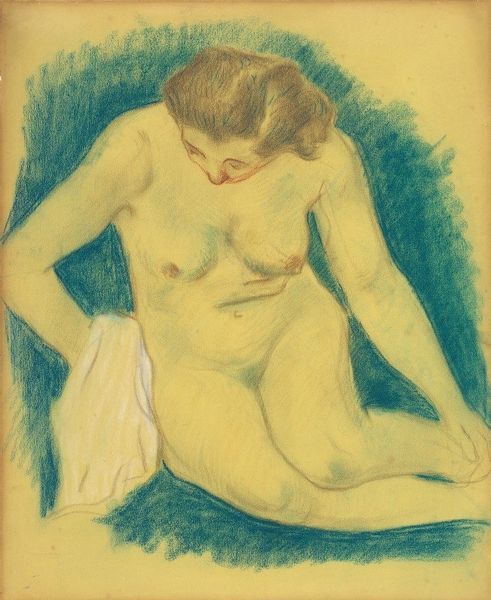
pastel
#
portrait
#
figurative
#
impressionism
#
oil painting
#
portrait reference
#
intimism
#
portrait drawing
#
pastel
#
nude
#
portrait art
Copyright: Public Domain: Artvee
Editor: Here we have Renoir's "Nu au fauteuil," likely created sometime between 1885 and 1890. It's a pastel drawing of a nude woman seated in a chair, rendered with soft, almost hazy lines. The overall effect is intimate, capturing a private moment. What strikes you about it? Curator: I am most interested in the materiality of the pastel itself. Renoir chooses this medium over oil, shifting our understanding away from traditional, academic portraiture towards something quicker, more immediate, and, dare I say, more accessible in its production. What does pastel as a *material* choice suggest to you? Editor: That's interesting – I hadn't considered it that way. Perhaps it suggests a move away from the traditional hierarchy of art materials? Pastel feels less precious somehow. Curator: Exactly. It links to broader shifts in late 19th-century art production, reflecting both industrial advancements allowing for wider access to materials, and the growth of a market economy for art that included a broader range of social classes. The 'impressionistic' style then, is not simply aesthetic but intrinsically tied to the changing material conditions of art making. What kind of consumption of art do you think this would reflect at the time? Editor: Maybe a faster, more 'disposable' type of art consumption compared to the grand, historical paintings of the past? It feels more immediate, made with easily acquired materials. Curator: Precisely. And we must consider labor; pastels enabled artists to produce more works, expanding the potential reach, in the rising art market. So in the grand scheme of things, we need to consider the social implications of this 'less precious' approach to making. Editor: So, seeing it this way connects a "pretty picture" to wider issues of artistic production, access, and even economic forces at the time. That shifts how I think about Impressionism quite a lot. Curator: It shows how understanding the means of production shapes how we view the final product. Thank you for helping highlight that with me.
Comments
No comments
Be the first to comment and join the conversation on the ultimate creative platform.

